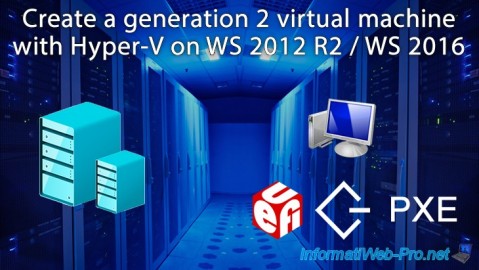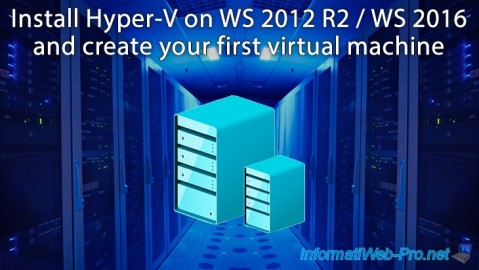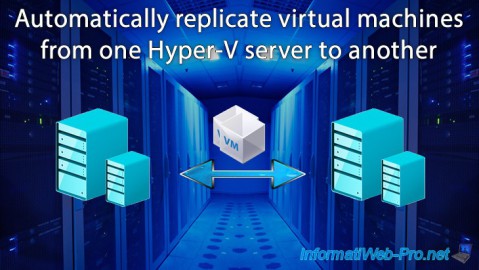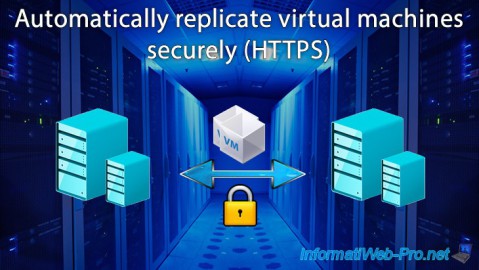Create a Hyper-V 3.0 failover cluster on WS 2012 R2 or WS 2016
- Microsoft
- 29 November 2019 at 10:34 UTC
-

- 4/6
3.2.2. Installing the guest operating system
The Hyper-V console is displayed.

Go to : Media -> DVD Drive -> Insert Disk.

Select the iso file of the operating system to install from the node that currently owns the role (the virtual machine in this case).
Note that you could also store your iso files directly in the shared volume of your cluster for access from any cluster node.

Start the virtual machine and it starts automatically on the iso file previously selected.

Wait while installing Windows.
As you can see from the Hyper-V Manager of the owner node, the virtual machine is also displayed and the clustered status of it is : Yes.
Note : this is only indicative, because you must of course manage your virtual machines from the failover cluster manager and not from the Hyper-V manager.
As you will have probably understood, the other virtual machines displayed by the Hyper-V Manager are not yet part of our cluster.

After the guest operating system is installed in the virtual machine, be sure to install the Hyper-V Integration Services (drivers for the virtual machine).

As you can see from the Failover Cluster Manager, the virtual machine is running.

Stop it.

3.2.3. Storing the virtual machine
Open the settings of your virtual machine.

As you can see, the virtual hard disk of our virtual machine is stored in "C:\ClusterStorage\volume1\...".

If you look through the file explorer, you see that the virtual machine is stored there.

As well as all its components : configuration files, virtual hard disks, ...

But, in reality, these files are stored on your iSCSI server in the iSCSI disk that is assigned to the cluster as : Cluster Shared Volume.

3.3. Change the default storage location of the Hyper-V server
As you previously noticed, when creating a new virtual machine from the Failover Cluster Manager, it's stored by default in "C:\ProgramData\Microsoft\Windows\Hyper-V".
This setting is actually that of the local server. If you want your new virtual machines to be stored directly on one of the disks of your cluster, you can go to the "Hyper-V Settings -> Virtual Machines" of your servers.

For example, select your folder "C:\ClusterStorage\volume1".

Now, virtual machines (except their virtual hard disks) will be stored on the shared volume of the cluster.

Do the same for storing virtual hard disks.

Store them for example in a "VHDs" subfolder.

Now, the virtual hard disks will also be stored on the shared volume of the cluster.

Now, if you are trying to create a new virtual machine from your cluster, you will see that it will be created by default in "C:\ClusterStorage\Volume1\".

The virtual hard disk will be stored in the VHDs subfolder of "C:\ClusterStorage\Volume1".

Virtual machines will be stored in a "Virtual Machines" subfolder.

Virtual hard disks will be stored in the VHDs subfolder.


Share this tutorial
To see also
-

Microsoft 9/6/2019
Hyper-V (WS 2012 R2 / 2016) - Create a generation 2 VM
-

Microsoft 8/10/2019
Hyper-V (WS 2012 R2 / 2016) - Install Hyper-V and create your first VM
-

Microsoft 11/8/2019
Hyper-V (WS 2012 R2 / WS 2016) - Automatically replicate virtual machines
-

Microsoft 11/15/2019
Hyper-V (WS 2012 R2 / WS 2016) - Automatically replicate virtual machines (securely)

No comment